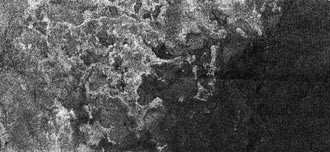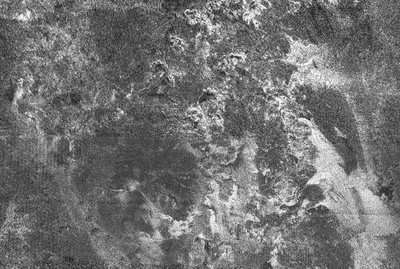Titan Shows Signs Of A "Cryovolcano" That Erupts In Ice
NASA's Cassini spacecraft has found possible ice volcanoes on
Saturn's moon Titan that are similar in shape to those on Earth
that spew molten rock.

Cassini Spacecraft Artist's Rendering NASA
Image
Topography and surface composition data have enabled scientists
to make the best case yet in the outer solar system for an
Earth-like volcano landform that erupts in ice. The results were
presented today at the American Geophysical Union meeting in San
Francisco. "When we look at our new 3-D map of Sotra Facula on
Titan, we are struck by its resemblance to volcanoes like Mt. Etna
in Italy, Laki in Iceland and even some small volcanic cones and
flows near my hometown of Flagstaff," said Randolph Kirk, who led
the 3-D mapping work, and is a Cassini radar team member and
geophysicist at the U.S. Geological Survey (USGS) Astrogeology
Science Center in Flagstaff, Ariz.
Scientists have been debating for years whether ice volcanoes,
also called cryovolcanoes, exist on ice-rich moons, and if they do,
what their characteristics are. The working definition assumes some
kind of subterranean geological activity warms the cold environment
enough to melt part of the satellite's interior and sends slushy
ice or other materials through an opening in the surface. Volcanoes
on Jupiter's moon Io and Earth spew silicate lava.

Cassini Image Of Titan's Surface NASA Image
Some cryovolcanoes bear little resemblance to terrestrial
volcanoes, such as the tiger stripes at Saturn's moon Enceladus,
where long fissures spray jets of water and icy particles that
leave little trace on the surface. At other sites, eruption of
denser materials might build up volcanic peaks or finger-like
flows. But when such flows were spotted on Titan in the past,
theories explained them as non-volcanic processes, such as rivers
depositing sediment. At Sotra, however, cryovolcanism is the best
explanation for two peaks more than 3000 feet high with deep
volcanic craters and finger-like flows.
"This is the very best evidence, by far, for volcanic topography
anywhere documented on an icy satellite," said Jeffrey Kargel, a
planetary scientist at the University of Arizona, Tucson. "It's
possible the mountains are tectonic in origin, but the
interpretation of cryovolcano is a much simpler, more consistent
explanation."

Titan Ice Volcano NASA Image
Kirk and colleagues analyzed new Cassini radar images. His USGS
group created the topographic map and 3-D flyover images of Sotra
Facula. Data from Cassini's visual and infrared mapping
spectrometer revealed the lobed flows had a composition different
from the surrounding surface. Scientists have no evidence of
current activity at Sotra, but they plan to monitor the area.
"Cryovolcanoes help explain the geological forces sculpting some of
these exotic places in our solar system," said Linda Spilker,
Cassini project scientist at NASA's Jet Propulsion Laboratory in
Pasadena, Calif. "At Titan, for instance, they explain how methane
can be continually replenished in the atmosphere when the sun is
constantly breaking that molecule down."
Cassini launched Oct. 15, 1997, and began orbiting Saturn in
2004.
 ANN's Daily Aero-Term (04.20.24): Light Gun
ANN's Daily Aero-Term (04.20.24): Light Gun Aero-News: Quote of the Day (04.20.24)
Aero-News: Quote of the Day (04.20.24) ANN's Daily Aero-Linx (04.21.24)
ANN's Daily Aero-Linx (04.21.24) Aero-News: Quote of the Day (04.21.24)
Aero-News: Quote of the Day (04.21.24) ANN's Daily Aero-Term (04.21.24): Aircraft Conflict
ANN's Daily Aero-Term (04.21.24): Aircraft Conflict





